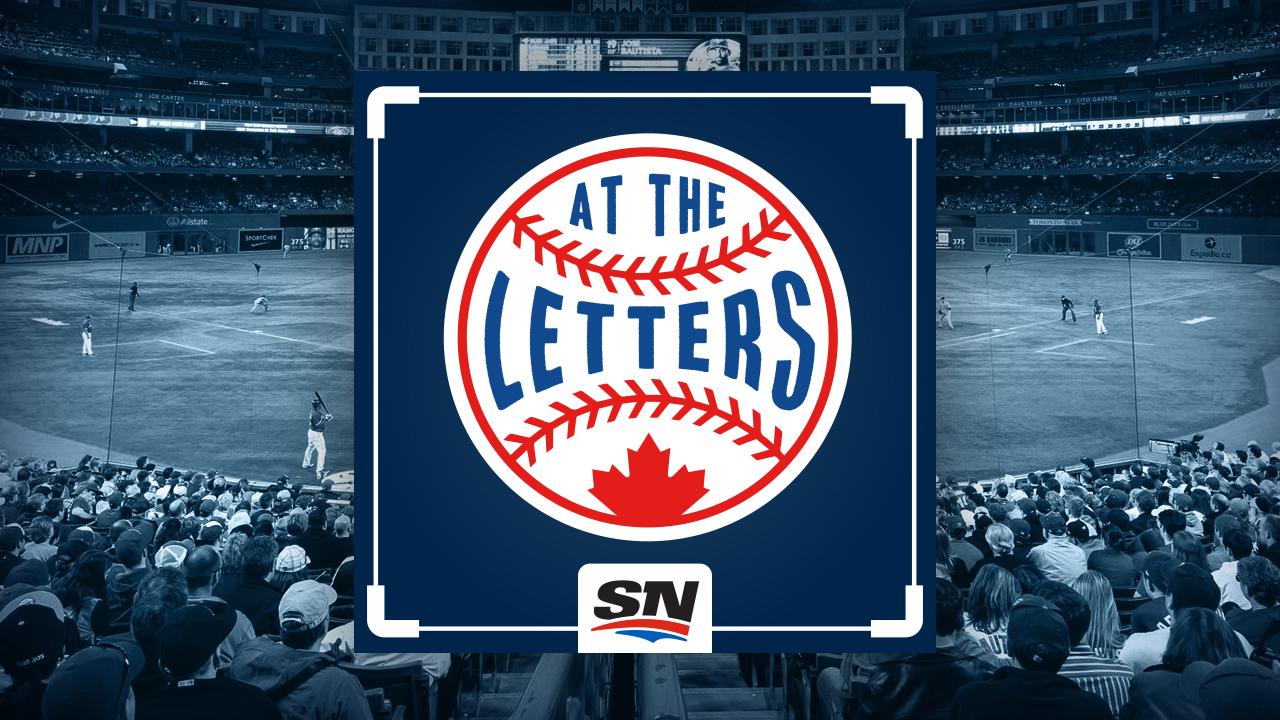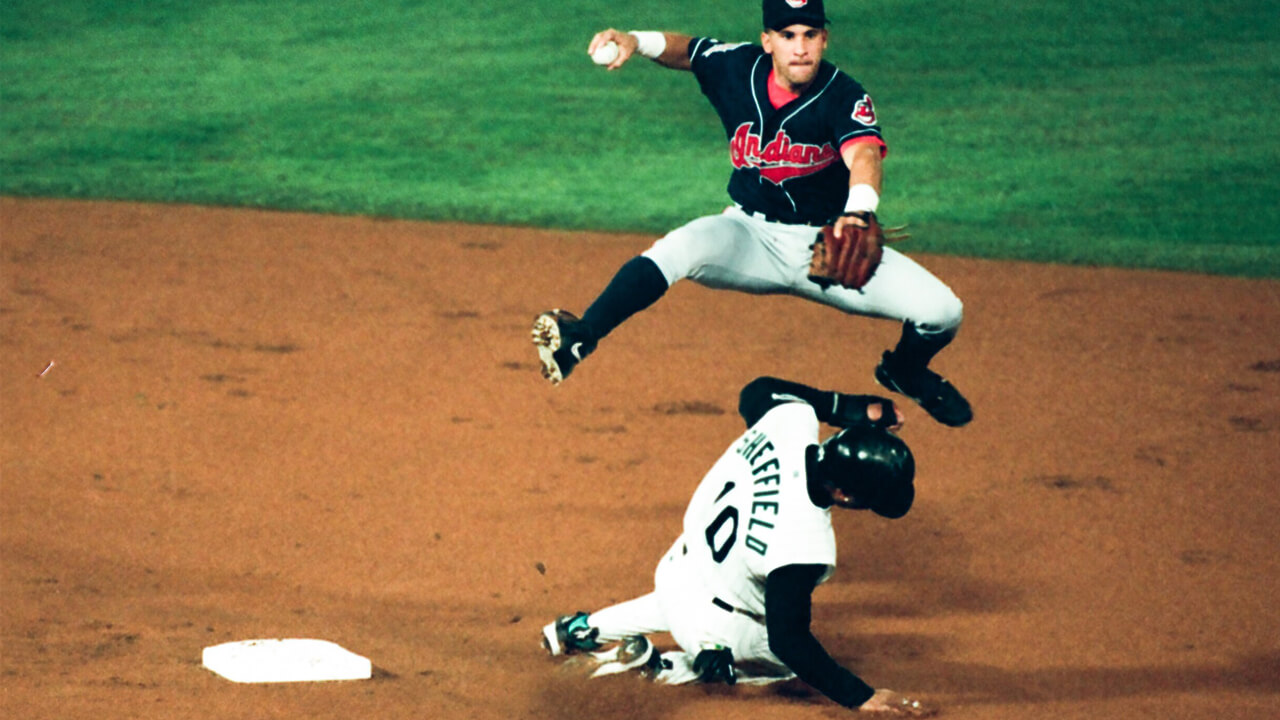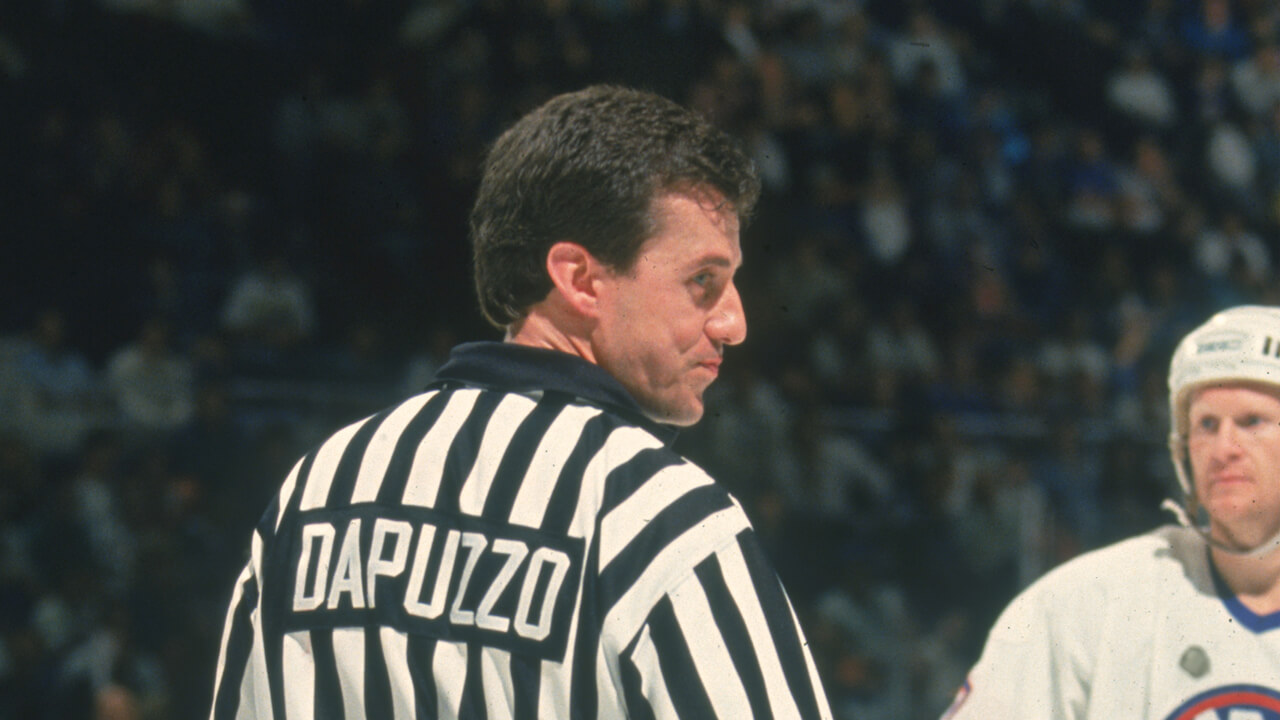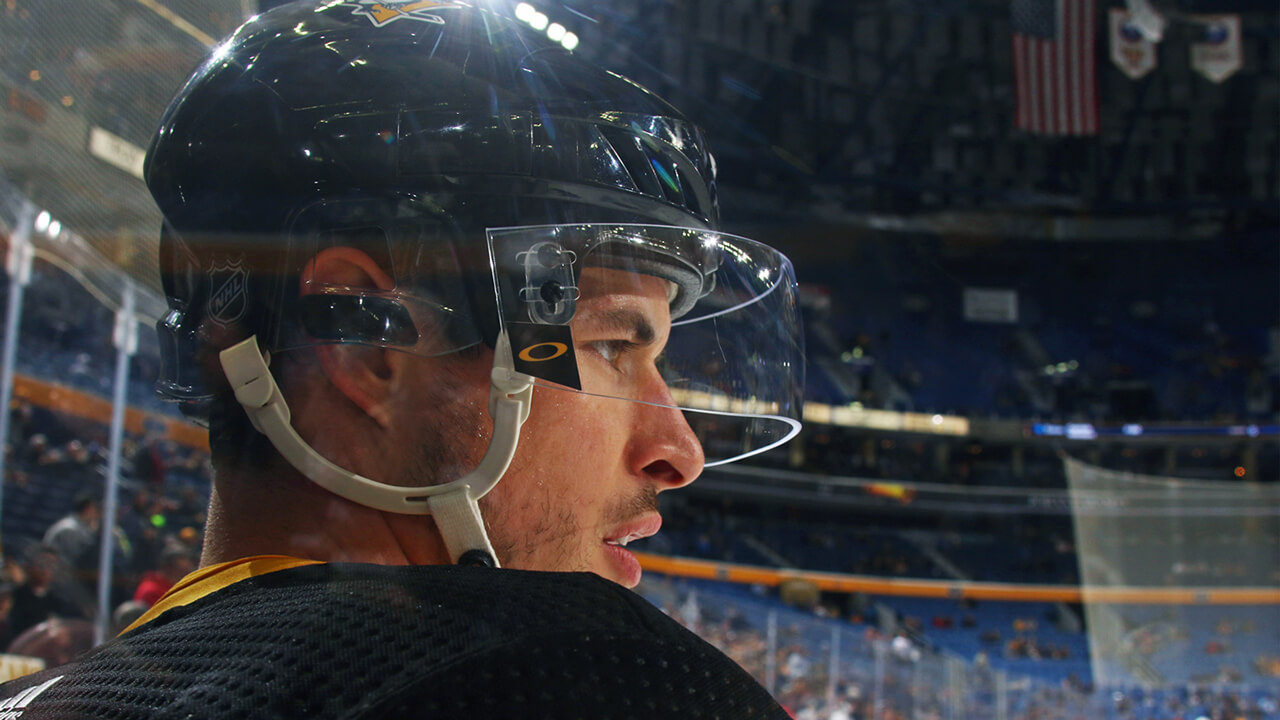Jordan Groshans knows a lot of people think he’s cocky. He knows because they tell him. Every time he climbs one of baseball’s umpteen top prospect lists; every time some analyst in an ill-fitting golf shirt throws his name out as one to watch; every time he goes 3-for-5 with a double and the internet’s cottage industry of minor-league box score watchers begins spitting out tweets with rocket and fire emojis — inevitably, someone from back home will send him the link. Because he doesn’t like being disingenuous, Groshans will respond in the affirmative, something like, yeah, I’m doing pretty well. And that’s when they’ll tell him.
“’Man, quit being cocky.’ ‘Dude, you’re so cocky.’ I’m like, ‘I’m not cocky — I’m confident in my ability,’” Groshans says, looking out over a backfield at the Toronto Blue Jays minor-league facility in Dunedin, Fla., days before the COVID-19 pandemic shut down professional sports across North America. “That’s something I live by; something I go every day by. When I step on the field, I’m not going to go out there thinking, ‘Oh, that dude’s better than me.’ I want to know that every time I’m on the field, I’m the best guy.”
If that self-assurance sounds familiar, it might be because you’ve heard 22-year-old Bo Bichette talk about his similarly unforgiving approach to the game. Or you’ve watched the aggressive play of Alex Bregman, who had a 50-double season at 24 and signed a $100-million deal a year later. Or you’ve seen a 20-year-old Juan Soto go yard off Gerrit Cole, Justin Verlander and Cole again during last year’s World Series, not so much standing in the box as owning it — shuffling, grabbing his crotch, and glaring menacingly out at the game’s best veteran arms after laying off wicked pitches that barely miss the zone.
Groshans thinks just like they do. He thinks baseball in the 2020s is going to be a young man’s game. And he thinks he’d like to carve out his own place within it. Toronto’s first-round draft pick in 2018, the only high schooler the club’s taken with its top selection in the past six years, and a player already considered a top-50 MLB prospect by Baseball America and Baseball Prospectus after only 71 minor-league games, Groshans carries himself like the everyday big leaguer the Blue Jays believe he’ll soon be. Evaluators lean on words like “advanced” and “polished” when describing how the 20-year-old looks more like a college senior at the plate. He has plus bat speed, quick-twitch athleticism and raw power from a six-foot-three frame he’s still growing into. He has a discerning eye for the strike zone and the patience to wait out a pitch he can drive. He has good hands and plenty of arm strength to play either position on the left side of the infield. But it’s his cutthroat mentality — an edge, a swagger, a little piss-and-vinegar — that really gets people talking.
“Since he debuted with us, he’s shown a confidence and a presence in the box that’s very encouraging,” says Gil Kim, Toronto’s director of player development. “I think Jordan recognizes that he’s somebody players look to as a leader. And he’s taken that seriously. He wants to be great.”
And he wants it sooner rather than later. Groshans doesn’t envision spending the next several seasons grinding out a slow, deliberate climb through the minor leagues, building up to an MLB debut in his mid-20s. He’s thinking near-term. He’s watching his old travel-ball buddy Jarred Kelenic — who went six picks ahead of him in the ’18 draft — fly up the Seattle Mariners system and figuring that looks like a pretty good path. He saw Vladimir Guerrero Jr. debut with the Blue Jays at 20, followed closely by Bichette at 21, and thought, I’m gonna be next.
“One thing I like about this organization, and the game of baseball today — I call it the ‘youth push.’ They can see that the days of being slow with guys, where it takes them five years to get to the major leagues — that’s over with. That’s done. Guys can be ready to be in the show in two to three years,” Groshans says. “You look at a lot of superstars — Soto, Bregman, people like that. The game’s getting younger and younger. They like the talent. The talent’s better. You obviously have some veteran guys who can play. But the youth is a big part of the game now.”
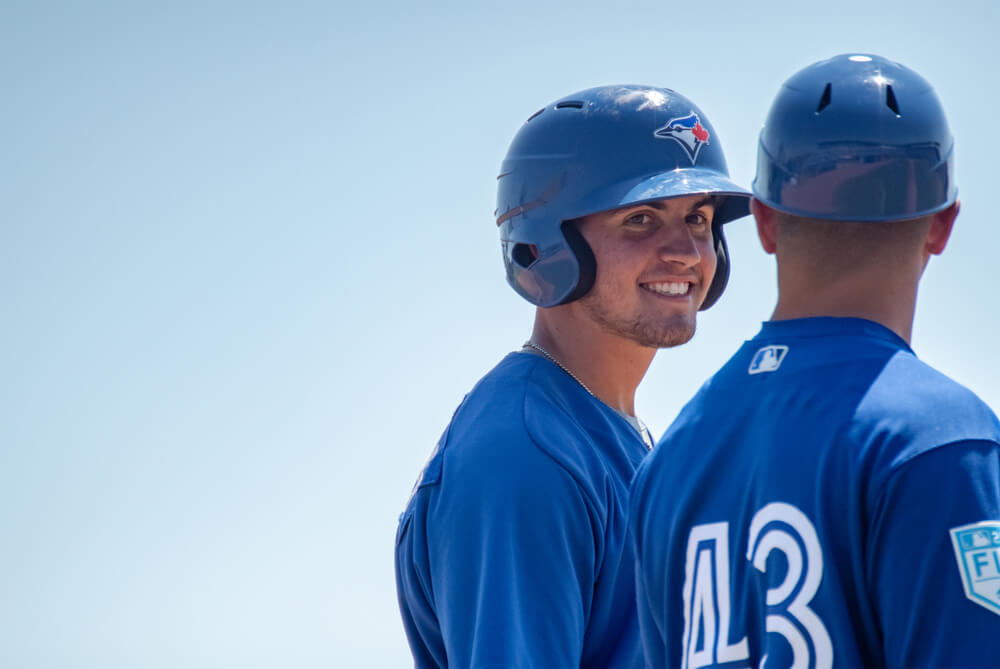
Taylor Shiflett, a history teacher in Magnolia, Texas, a small town about 45 minutes north of Houston, couldn’t tell you how many batting practice home runs he’s given up to Jordan Groshans. It’s a lot. You take the four years Groshans spent playing for Shiflett’s Magnolia High School Bulldogs, multiply that by three or four practices a week, plus 30 or so games a year, add inter-squads and the not-so-infrequent showcase for whichever scout or MLB executive came to town… it’s just a lot. But Shiflett can tell you about the day Groshans couldn’t miss.
It was a practice during his senior season and Groshans was lifting ball after ball beyond the outfield fence. He was enjoying it, too. Maybe a little too much if you ask his teammates, who assured him it was just the bat. The bat’s hot. Anyone can hit them out with that thing. So, Groshans stepped out of the cage and grabbed a teammate’s bat. Crack. Shiflett gave up another homer. Then Groshans grabbed another bat. Crack. And another. Crack. Crack. Crack. On seven consecutive pitches, using seven different bats, Groshans left the yard. “He’s just that good,” Shiflett says. “You throw him a fastball just about anywhere in the zone and he’s probably going to turn it around for you.”
Athletic genes help. Groshans’s father, Thomas, played defensive tackle at the University of Colorado. His mother, Jodi, was a cheerleader at Tarleton State. His older brother, Jaxx, played three seasons at the University of Kansas before he was selected by the Boston Red Sox in the fifth round of the 2019 draft. Thomas started telling Jodi their sons were going to grow up to be pro ballplayers when Jordan was 10. He built the boys a backyard batting cage. The family moved to Magnolia from Dallas when Jordan and Jaxx were young so they could play for the same travel ball program that Paul Goldschmidt and Jameson Taillon grew up playing for. “That’s all they’d do. Work out, play baseball, spend time at the field,” Shiflett says. “And if they’re not at the field, they’re probably at home doing something baseball-related.”
The Groshans’ arrival in Magnolia was a real boon for Shiflett’s Bulldogs. Jaxx started on his varsity team as a freshman, leading the way for Jordan, who did the same thing a couple years later. Shiflett thought Jaxx was the best freshman he’d ever seen until Jordan showed up, already six-foot-one at 15, and took over as his starting shortstop. Competing against 18-year-olds, Shiflett watched Groshans “struggle” at the plate initially, which meant he hit merely .280 as a freshman. But by the time he was a senior, he was batting .444 and reaching base in more than half his plate appearances. Shiflett figures Groshans struck out no more than a dozen times that entire season. “If he got called for strike three, then the umpire was probably wrong,” Shiflett says. “He’s the most disciplined guy I’ve ever seen.”
Shiflett hit Groshans leadoff as a senior, with his other slugger and the ace of his pitching staff, Adam Kloffenstein, batting in the three-hole. If the opposition starter didn’t want to pitch to Groshans, who hit 11 homers that year, they were going to have to deal with Kloffenstein, who hit nine.
As time wore on, more and more MLB personnel started turning up at Magnolia’s games. More than 40 scouts would cram into the visitors’ dugout to watch Groshans take pregame batting practice and field groundballs, clearing out when Magnolia’s opposition arrived and scurrying off to the bullpen where they’d watch Kloffenstein throw. The duo were the talk of the town of 1,500. Magnolia had seen a player drafted in the 18th round a year earlier, but never anything like this. One day, when Magnolia was playing its biggest rival, Tomball, a large contingent from a baseball agency showed up in suits and ties, sweating buckets in 90-degree Texas heat. Kloffenstein walked the bases loaded in the first inning before settling in and throwing a no-hitter, while Groshans scored his team’s only run with a homer in the top of the sixth.
Shiflett remembers meeting five MLB GMs that year. Milwaukee showed real interest in Groshans; Miami did, too. But the Blue Jays were picking higher and had an idea. If they selected Groshans at No. 12, far earlier than he was anticipated to be drafted, they could sign him for less than the slot value of that pick and use the remaining money to sign Kloffenstein away from a strong commitment to Texas Christian University in a later round. Of course, the Blue Jays didn’t tell Groshans their plan when assistant GM Tony LaCava sat and talked hitting with him for 30 minutes in Magnolia’s dugout that spring, nor when Groshans met with Toronto GM Ross Atkins and then-manager John Gibbons during a Blue Jays series against the Rangers in Arlington that April. It was only after they selected Groshans in the first round that they told him they were targeting his teammate, too, and asked if he could put in a good word with Kloffenstein in the meantime.
Ben Nicholson-Smith and Arden Zwelling host the most in-depth Blue Jays podcast in the league, covering off all the latest news with opinion, analysis and interviews.
That was no problem — Kloffenstein lived down the street. And Groshans was there with him when the Blue Jays selected the six-foot-five right-hander a day later and called to talk numbers. Ultimately, the ploy worked, as Groshans signed for $3.4 million, $800,000 below slot, while Kloffenstein received the $2.45-million bonus he was looking for to keep him from college (Kloffenstein had actually set his walkaway at $2.5 million and nearly didn’t sign, but when he told his best friend about the Blue Jays final offer, Groshans said he’d kick in the final $50,000).
Those big commitments — plus $1.35 million for second-round pick Griffin Conine — ate up almost all of Toronto’s draft budget that year. The club had to use three of its first 10 picks on college seniors who signed for $5,000 bonuses in order to make the money work. But it didn’t take long for Groshans to demonstrate why the club went through all that trouble. He drove in four with two hits — including a ninth-inning homer — in his rookie ball debut, and went on to tear up the Gulf Coast League over 37 games, putting up an .890 OPS as an 18-year-old. He hit a brief, 11-game skid upon being promoted to Toronto’s Appalachian League affiliate late in the season, but then returned at Single-A Lansing in 2019 — a league where the average age was more than two years his senior — to post a .909 OPS over his first 22 games. Playing shortstop and batting third in the order, Groshans put up twice as many multi-hit games as hitless games.
“That was exciting to watch,” Kim says. “Jumping into Lansing right away and putting up that kind of production is very impressive. But I think what was most impressive to us was how committed he was to his defence and improving as a shortstop. He worked a ton on improving his footwork at shortstop. And we were pretty excited by that progress.”

One day during his senior year at Magnolia in 2018, Groshans took one of his big, leg-kicked cuts at a pitch and fouled it directly down and off his left foot. It hurt pretty bad. Enough to make him sit out the Bulldogs’ next game — the only one he missed in four years at Magnolia. Whether or not that had something to do with Groshans losing the final four months of his 2019 season to an injury in the same foot is anyone’s guess. It’s one theory.
Another is that Groshans developed a stress reaction over the course of 2018 as he made the shift from the light demands of a high-school season to the daily grind of a professional one. Couple that with Groshans’s admittedly lax commitment to conditioning at the time, and maybe the injury was always going to happen, foul ball or not. Who’s to say? All Groshans knows is his foot bothered him here and there early in 2019, but never enough to stop him from playing. That was until a game in April when he took a step out of the box and knew something wasn’t right. The Blue Jays decided to give him a breather to let the discomfort subside. He returned after 10 days and went 2-for-5 as Lansing’s designated hitter. But three nights later he drove a ball up the middle, hobbled to first base, and was lifted for a pinch-runner. He hasn’t played since.
It’s all led to much mystery and speculation as to what exactly happened to Toronto’s top position-player prospect in 2019. Even those close to Groshans have been left in the dark. As Shiflett says, “I’ve talked to him maybe six times about it and I still don’t know what’s wrong with his foot.” The Blue Jays now describe it as a “pre-existing navicular injury,” which allows for both the foul ball and overuse theories to be simultaneously true.
What’s frustrated Groshans more than when the injury occurred, or what exactly it was, is how long it took to heal. He spent the latter half of May at the Blue Jays facility in Dunedin rehabbing with the goal of returning later on in the season. But progress was slow, and one day Groshans got word that Toronto’s development staff was having a meeting about his rehab. The next, he was told the club was shutting him down for the season.
“I was disappointed, not going to lie. Because I’m a competitor. I like to play. And obviously I want to get to Toronto as fast as I can,” he says. “It was hard. When you’re rehabbing, there are a lot of long days where you get done early, go back to the hotel, and you’re just by yourself. You can only play so much Call of Duty, you know? It was a little lonely. I missed my family. I missed my teammates. All that stuff. It was definitely hard. But I knew there were better things coming if I could just get through it.”
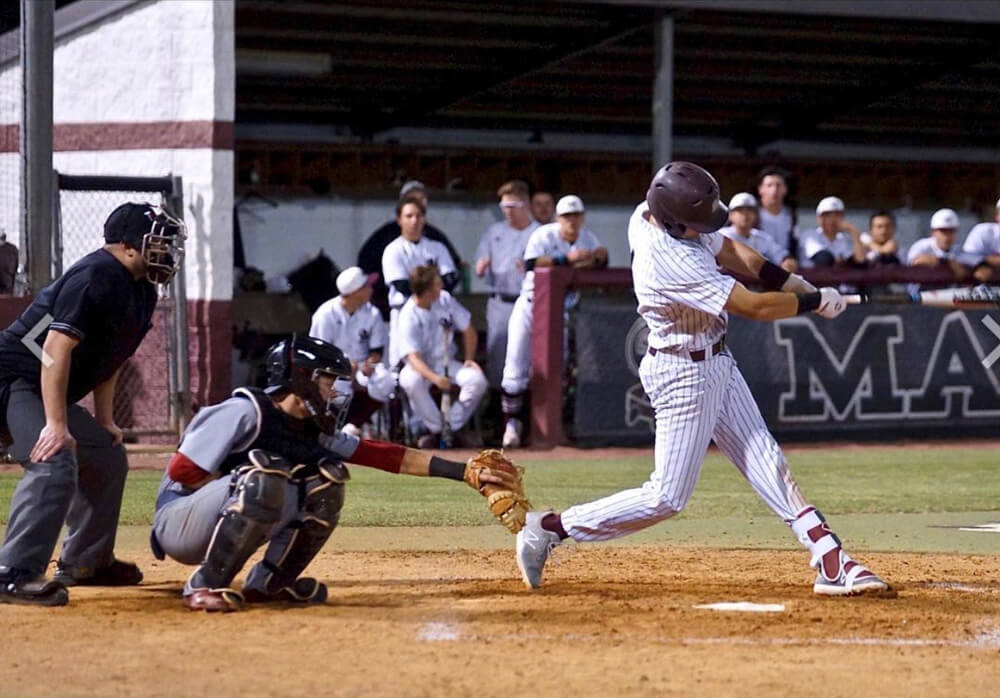
Rehab wasn’t fun, but it was an opportunity. Only 19, Groshans was still prone to some of the adolescent habits he’d developed in high school. When he was playing two games a week and the best player on every field he took, he could get away with eating fast food between games and training without real purpose, skipping out on warm-up drills and mobility work. But those tendencies were sabotaging his progress as a professional playing every day against much tougher competition. “Coming from high school, it’s hard because it’s not an everyday grind. You can just show up to the field every day and know your spot’s secure. Out here, it’s not that,” he says. “It doesn’t matter if you made three million dollars or fifty grand, you know? If one guy’s out-performing the other one, he’s going to play. It’s sad but it kind of took this to happen to get me going with that. And I’m actually glad. If it were to happen, I’m glad it happened now rather than a couple years down the road. So, I’ve learned from it. I’ve matured from it.”
Now, Groshans is cooking many of his own meals, thanks in large part to his father, who showed him how to grill chicken breast, salmon, and steak. He’s taking multi-vitamins, fish oil, branch chain amino acids, creatine. He’s in the weight room early, performing a 30-minute activation routine he developed while rehabbing. He’s trying to gain as much lean mass as possible and fill out his frame. The Blue Jays currently list him at 205 pounds, well up from the 178 they had him at two years ago. Still only 20, it’s a decent bet that he’ll be up over 225 someday. That physical projectability is why so many evaluators think Groshans has the opportunity to combine his elite bat speed with a thicker frame to put up big power numbers.
It’s also why shortstop might not be his long-term position — he may just outgrow it. An athlete of that size will naturally be a little less mobile than one like Bichette, who’s listed at six-foot, 185 pounds. And the game’s best defensive shortstops — Andrelton Simmons, Javy Baez, Francisco Lindor, Paul DeJong — are all built similarly. There’s also the matter of the developmental equity the Blue Jays have invested in Bichette, who’s grown from a player many believed would ultimately be a second baseman to a capable big-league shortstop in quick order. If Bichette continues to improve defensively and hit the way he has his entire life, the position’s his. Of course, if Groshans hits his way to the majors, you can bet the Blue Jays will find room for him, too. He’s willing to move to third base if it comes to that, and Guerrero Jr.’s increasingly inevitable transition to the opposite corner of the diamond may present a simple solution someday. But these are all questions that will be answered in time. For now, Groshans is a shortstop. And, most importantly, he’s healthy.
“It’s honestly just a big relief. Like, a big weight’s lifted off my shoulders,” he says. “I don’t have to come in every day and go to rehab. I get to go do what I love to do and be around my teammates and be around people I’m going to play with. It’s exciting just to be normal. I’m a normal guy again. I’m ready to get back to business.”

There is work to be done, of course. Which is why this bizarre year for baseball, and the world at large, is a particularly frustrating one for a guy in Groshans’s position. He entered 2020 already needing to make up for lost development time following last season’s injury. Then, a pandemic hit. It’s now been more than a year since he last played a game that counts and his next one might not be anytime soon. This is when he should be continuing to hone the revamped two-strike approach he began implementing this spring, widening his stance to prioritize contact over power. He should be making in-season adjustments, like the one he made early last year to lessen his leg kick and stay more balanced in the box. He should be getting live reps at shortstop, continuing to hone his footwork and improve his reads, endeavouring to prove he can stick at the position as he continues to advance. Instead, Groshans is working out at home in Magnolia, taking the occasional live at-bats against Kloffenstein and, like the rest of us, waiting for what’s next.
But who knows what’s next? MLB may play a 2020 season, but the minor-leagues likely won’t. The Blue Jays will surely find a creative way to expose Groshans and other top prospects to tougher competition if they can — possibly in a supercharged summer instructional league against minor-leaguers from other organizations or at an expanded Arizona Fall League. But there’s no telling how this unusual year will impact the developmental timelines applied to that young talent. Finally healthy, does Groshans pick back up where he left off in A-ball next season? Does he get challenged right away with high-A or even double-A? Originally, Groshans’s goal for this year was “20/20 in 2020.” That’s 20 homers and 20 stolen bases. But as things stand now, it’s hard to say if he’ll get 20 games.
In a way, it’s merely an extension of what has been an exceedingly frustrating 12 months. When he entered the Blue Jays organization, Groshans was put on the Bichette progression path — Gulf Coast League at 18, A-ball at 19. From there, Bichette went to double-A at 20, and the majors at 21, after three-and-a-half minor-league seasons. Groshans has flashed the same loud bat Bichette did on his climb. He’s made similar defensive improvements. He’s overcome a slump. He watched what Bichette did and wanted to be next. And if not for a stubborn injury and a global catastrophe, he might’ve been.
But what can you do? There’s no sense getting salty about it now, and Groshans knows that. Blue Jays developers drill it into every player in the system: “Control what you can control.” He’s waited this long to be a ballplayer again — he can stand to wait a little bit longer. “Jordan’s shown a ton of patience and maturity, going through what he went through last season,” Kim says. “And even throughout the off-season, the level of commitment he made to himself and his career was very impressive. He’s really taken ownership of it. We’ve been really encouraged with Jordan’s commitment to being the best teammate and leader that he can be.”
Here’s an example. Having long viewed Bichette’s quick path to the majors as one he’d like to emulate, when Groshans first got a chance to meet the Blue Jays shortstop in Dunedin, he knew exactly what he wanted to ask him. It was about the first extended slump of Bichette’s life, which came when he was a 20-year-old in double-A. He was chasing pitches he shouldn’t have, making approach changes he didn’t need to. The first four months of the season wore on him mentally, sapping his confidence as failure compounded. But in the final weeks of the season Bichette pulled himself out of the tailspin, went on a tear, and became a big-leaguer a year later. Groshans wanted to know what Bichette did to get out of it. And what he should do if and when the same thing happens to him.
“The biggest thing is how to handle failure at this level,” Groshans says. “He was 20-years-old, hitting .280, and he was hard on himself about it. And he was telling me, like, you just can’t do that. When you’re 0-for-15, 0-for-20 — you don’t get down on yourself or change your mentality. You learn from it. You learn what you’re doing, learn how to adjust. But more than anything, you don’t ever doubt yourself. You always believe you’re the best guy on the field. Just hearing that from him, that was huge. Because that’s how I think.”
It’s not cockiness, it’s confidence — Groshans can’t say that enough. When someone texts him a tweet about his latest big night at the plate, he doesn’t get bashful, he gets bold. He doesn’t talk about if he’ll make it to the big leagues, he talks about when. He told Kelenic it’s no sweat running second in their race to the majors — he’ll just win the race to the Hall of Fame.
“You see Bichette, Vladdy, Cavan, guys like that — they don’t go up to the plate thinking, ‘Oh, let’s see how it goes.’ They’re looking at the pitcher like, ‘I’m going to tear you apart,’” Groshans says. “That’s what separates those guys. I think in order to be good at this game, you’ve got to be confident. You have to be. And I think that’s one thing that a lot of people in the organization like about me. I’m not one of those guys that’s going to roll over. I’m going to compete every inning, every pitch, every out. And I don’t plan on stopping that.”

